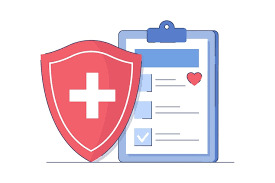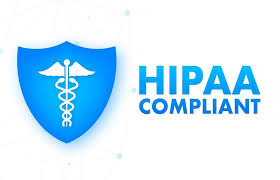Don't wanna be here? Send us removal request.
Text
Why Outsource Your HIPAA Direct Mailing Programs?

In the healthcare industry, effective communication is critical, especially when it involves sensitive patient data. While many providers rely on digital channels, direct mail remains a trusted, tangible method for appointment reminders, billing, lab reports, and notices. But with HIPAA regulations in place, managing direct mail in-house can be a logistical and compliance challenge.
Outsourcing HIPAA-compliant direct mailing programs to specialized vendors offers a compelling solution. This article explores the reasons healthcare providers should consider outsourcing, its benefits, how it ensures compliance, and what to look for in a trusted provider.
What Is HIPAA-Compliant Direct Mailing?
HIPAA-compliant direct mailing ensures all physical communications involving Protected Health Information (PHI) meet the requirements set forth in the HIPAA Privacy and Security Rules. This includes:
Secure data transfer protocols.
Controlled printing and mailing environments.
Tamper-proof packaging.
Limited access to PHI.
A signed Business Associate Agreement (BAA).
Why In-House Mailing Can Be Risky and Inefficient
Managing your own HIPAA-compliant mailing operations may seem cost-effective, but it comes with challenges:
Inadequate security protocols.
Lack of compliant printing/mailing infrastructure.
Staffing limitations.
High operational costs.
Greater risk of HIPAA violations.
Unless your organization is equipped with enterprise-level mailing solutions and extensive compliance training, in-house operations can become a liability.
Top Reasons to Outsource HIPAA Direct Mailing Programs
1. Guaranteed Compliance with HIPAA Regulations
Professional direct mail vendors specialize in secure document handling. Their systems are regularly audited, updated, and fully aligned with HIPAA standards. From data encryption to secure delivery processes, they minimize your exposure to non-compliance.
2. Cost Savings
Outsourcing eliminates the need for:
Purchasing high-end printers and mailing equipment.
Managing inventory for envelopes, paper, ink, and postage.
Hiring and training dedicated mailing staff.
Vendors leverage bulk mailing discounts, automation, and optimized logistics—reducing your per-piece cost significantly.
3. Increased Operational Efficiency
Outsourced mailing partners offer automation tools that integrate with EHR, CRM, and billing systems. This enables you to:
Automate trigger-based mailings (e.g., test results, appointment follow-ups).
Track mail delivery status.
Schedule mailings in bulk or per patient.
This saves administrative time and improves workflow.
4. Enhanced Data Security
HIPAA mail vendors utilize:
End-to-end data encryption.
Role-based access control.
Secure FTP or API-based data transfer.
Redundant systems and secure servers.
These safeguards are difficult to maintain consistently in-house.
5. Business Continuity and Disaster Recovery
What happens if your local mail center is impacted by fire, flood, or cyberattack? Outsourced partners often have disaster recovery plans, secure backups, and geographically redundant printing locations.
6. Expertise in Regulatory Updates
HIPAA regulations are complex and frequently updated. Outsourced vendors stay up to date with:
HITECH Act enhancements.
State-specific data protection laws.
OCR (Office for Civil Rights) guidelines.
Their compliance teams ensure your mail campaigns meet the latest legal requirements.
7. Scalability
Whether you're sending 1,000 or 1 million mailings, outsourced vendors can scale up without sacrificing speed, quality, or security. This is especially useful for:
Health insurance companies.
Hospitals and networks.
National lab providers.
Public health agencies.
Common Use Cases for HIPAA-Compliant Outsourced Mailing
Appointment reminders and confirmations.
Explanation of benefits (EOBs).
Billing and collections letters.
Test results and lab notifications.
Insurance updates and policy information.
Wellness campaign outreach.
Outsourcing these ensures every piece is printed, packaged, and delivered securely and efficiently.
How to Choose the Right HIPAA Mailing Partner
When evaluating potential vendors, prioritize the following:
1. HIPAA Certification and BAA
Ensure the vendor signs a Business Associate Agreement and has documented HIPAA training, audits, and certifications.
2. Experience in Healthcare Mailing
Choose a partner with a strong healthcare portfolio and experience handling PHI.
3. Secure Technology Stack
Ask about:
Data encryption standards.
Secure file transfers (SFTP, HTTPS).
Audit logging and access tracking.
Automated redaction or data masking.
4. Transparent Workflow and Reporting
The right vendor should provide:
Proof of mail (POM) reporting.
Mail tracking dashboards.
SLA-based delivery metrics.
5. Integrated Solutions
Top providers offer APIs or platform integrations with your existing systems (EHR, CRM, billing) to simplify data workflows.
What a HIPAA-Compliant Mailing Workflow Looks Like
Data Collection: PHI is extracted securely from EHR/CRM.
Secure Transfer: Files are encrypted and transferred via secure protocols.
Data Formatting: Documents are dynamically generated per patient.
Print and Mail: Printed in secure facilities, folded/inserted using automated machinery, and sealed in tamper-proof envelopes.
Delivery and Audit: Tracked through intelligent mail barcodes, with audit logs for compliance.
Case Study: Hospital Streamlines Billing Through Outsourced HIPAA Mailing
A 500-bed hospital in Texas faced repeated billing delays due to staff shortages. By outsourcing to a HIPAA-compliant mailing partner:
Reduced billing cycles from 10 to 3 days.
Cut operational mailing costs by 35%.
Experienced zero HIPAA violations in two years of audits.
Improved patient payment rates by 28% through timely, reliable communication.
Future Trends in HIPAA-Compliant Mailing
AI-Powered Mail Sorting and Personalization
Automated API-Driven Workflows
Omnichannel Communication Blends (mail + SMS + portal)
Eco-friendly, compliant mailing materials
Blockchain for immutable delivery logs
Healthcare communication is evolving—but direct mail remains a crucial, compliant touchpoint.
Conclusion
Outsourcing your HIPAA direct mailing programs is not just a matter of convenience—it’s a strategic move. It offers better compliance, cost control, data security, and scalability. As patient expectations and regulatory demands increase, partnering with the right HIPAA-compliant vendor can give your organization a competitive edge and peace of mind.
By eliminating risk and improving delivery accuracy, outsourced mailing ensures your focus remains on patient care—not printing problems.
youtube
SITES WE SUPPORT
HIPAA Automated Mails – Wix
0 notes
Text
Importance of HIPAA compliant framework and practices

In the rapidly evolving healthcare ecosystem, patient privacy and data security have become more critical than ever. The Health Insurance Portability and Accountability Act (HIPAA), enacted in 1996, provides a comprehensive framework for safeguarding sensitive patient data. As medical providers increasingly adopt digital and hybrid communication systems, adhering to HIPAA-compliant practices is no longer optional—it’s essential.
In this article, we’ll explore the importance of a HIPAA-compliant framework, its core components, real-world implications for healthcare organizations, and best practices to ensure ongoing compliance.
What Is HIPAA and Why Was It Enacted?
HIPAA is a U.S. federal law designed to protect sensitive patient health information from being disclosed without the patient’s consent or knowledge. Its primary objectives are:
To improve the portability and continuity of health insurance.
To combat fraud, waste, and abuse in health insurance and healthcare delivery.
To simplify the administration of healthcare through standardized electronic transactions.
To protect patient health information through robust privacy and security measures.
Key Elements of HIPAA Compliance Framework
A HIPAA-compliant framework involves a combination of administrative, physical, and technical safeguards. Below is a breakdown of its core pillars:
1. Privacy Rule
The HIPAA Privacy Rule sets standards for how PHI (Protected Health Information) should be used and disclosed. It ensures patients’ rights to access, amend, and control their health data.
2. Security Rule
This rule addresses the protection of electronic Protected Health Information (ePHI). It focuses on three main areas:
Administrative Safeguards: Workforce training and risk assessments.
Physical Safeguards: Facility access control and workstation security.
Technical Safeguards: Access controls, encryption, and audit controls.
3. Breach Notification Rule
In case of a data breach, healthcare entities must notify affected individuals, the Department of Health and Human Services (HHS), and, in some cases, the media.
4. Enforcement Rule
This rule outlines the penalties for non-compliance, ranging from monetary fines to criminal charges depending on the severity and intent of the violation.
Why a HIPAA-Compliant Framework Matters
1. Legal Protection
Non-compliance with HIPAA can lead to severe legal consequences, including:
Civil penalties of up to $1.5 million annually.
Criminal penalties including imprisonment.
Lawsuits and loss of license.
2. Protects Patient Trust
Trust is the foundation of any healthcare relationship. Ensuring that PHI is secure fosters patient confidence in your organization’s ability to provide care responsibly.
3. Prevents Data Breaches
Healthcare data is a prime target for cybercriminals. A robust HIPAA-compliant framework minimizes vulnerabilities, safeguarding your organization against ransomware attacks and internal threats.
4. Enhances Operational Efficiency
Compliance requires an organized approach to managing data. Implementing HIPAA practices often streamlines documentation, improves workflow, and supports better resource allocation.
5. Competitive Advantage
Healthcare providers and business associates that highlight their HIPAA compliance build credibility. This is a major differentiator in partnerships, patient acquisition, and reputation management.
Challenges in Maintaining HIPAA Compliance
While the benefits are clear, maintaining HIPAA compliance is challenging:
Evolving Regulations: Healthcare laws are continuously updated, requiring constant vigilance.
Technology Integration: New tools and third-party platforms may not always be HIPAA-compliant.
Employee Awareness: Human error remains one of the leading causes of data breaches.
Complex Communication Channels: Balancing security with usability across email, SMS, cloud, and print communications.
Best Practices for Implementing a HIPAA-Compliant Framework
1. Conduct Regular Risk Assessments
Regular security risk assessments (SRAs) help identify vulnerabilities and threats to PHI, providing a roadmap for corrective actions.
2. Enforce Role-Based Access
Limit data access to authorized personnel only. Implement role-based controls and document access logs for auditing purposes.
3. Encrypt All ePHI
Encrypt data at rest and in transit. Use secure protocols like HTTPS, VPNs, and SFTP for transmission.
4. Create a HIPAA Compliance Policy
Document your organization’s HIPAA policies and procedures. Ensure that all staff members are trained and updated regularly.
5. Partner with HIPAA-Compliant Vendors
If you outsource services like mailing, billing, or IT, ensure they are HIPAA-compliant and willing to sign a Business Associate Agreement (BAA).
6. Implement Secure Communication Tools
Use HIPAA-compliant communication platforms for patient engagement, such as encrypted emails, patient portals, or compliant direct mail systems.
7. Prepare a Breach Response Plan
Develop a written incident response plan to act quickly in the event of a breach. Fast action reduces damage and ensures regulatory compliance.
HIPAA Compliance in Direct Mail and Communications
Physical mail remains a significant communication channel for many healthcare providers. HIPAA compliance extends to:
Secure printing practices.
Tamper-proof envelopes.
Discrete addressing and labeling.
Partnering with HIPAA-certified mail service providers.
Healthcare marketers must ensure that any patient-identifiable information, appointment reminders, lab results, or bills sent via direct mail comply with HIPAA.
Real-World Consequences of Non-Compliance
Several high-profile cases underline the importance of HIPAA compliance:
Anthem Inc. (2015): Data breach affected nearly 80 million records. Settlement: $16 million.
Advocate Health (2013): Theft of unencrypted computers. Penalty: $5.55 million.
MD Anderson (2019): Loss of unencrypted devices led to $4.3 million in fines.
The Future of HIPAA Compliance
The future of healthcare privacy is evolving, with new trends such as:
AI and ML: Requires additional controls to manage patient data securely.
Telemedicine: Expanding HIPAA applications to video and audio consultations.
Mobile Health (mHealth) Apps: Increasing the scope of third-party compliance.
Healthcare providers must remain agile and proactive in updating their HIPAA-compliant frameworks to meet emerging threats.
Conclusion
A HIPAA-compliant framework is foundational for any organization handling PHI. It safeguards legal standing, protects patient trust, and reinforces operational efficiency. As data breaches continue to rise, the importance of adopting comprehensive HIPAA practices becomes non-negotiable. Whether you’re a healthcare provider, insurer, or third-party vendor, now is the time to assess, reinforce, and future-proof your compliance strategy.
youtube
SITES WE SUPPORT
HIPAA Automated Mails – Wix
0 notes
Text
How does direct mail automation benefit your business?

In a highly digital, fast-paced world, businesses constantly seek effective ways to cut through the noise and engage customers meaningfully. While email marketing, social media, and online advertising dominate most strategies, direct mail marketing remains a powerful and underutilized channel. But it’s not just traditional mail anymore—direct mail automation has revolutionized this strategy, allowing businesses to personalize, streamline, and scale outreach with precision and minimal effort.
This guide explores the top benefits of direct mail automation and why your business should consider integrating it into your marketing and communication workflows.
What is Direct Mail Automation?
Direct mail automation refers to the integration of digital tools and APIs to send personalized, physical mail—such as postcards, letters, flyers, brochures, or checks—automatically, based on customer behavior or campaign triggers.
Instead of manually printing, stuffing, stamping, and mailing materials, businesses can use direct mail platforms or APIs that handle everything from printing to delivery, using predefined rules and data integrations with CRMs, eCommerce platforms, or marketing automation software.
1. Enhanced Operational Efficiency
Manual direct mail campaigns are time-consuming and labor-intensive. Coordinating designers, printers, envelopes, and postage for every campaign creates operational bottlenecks.
With automation, your business can:
Automate batch or trigger-based mailings from your CRM or eCommerce system.
Eliminate repetitive administrative work.
Enable same-day or next-day fulfillment without human intervention.
Manage mailing campaigns remotely using cloud platforms.
This level of automation reduces turnaround time from weeks to days or even hours, freeing up your team to focus on strategy rather than logistics.
2. Higher Personalization for Better Engagement
Personalization drives response rates—and direct mail is no exception. With direct mail automation, businesses can use customer data to generate dynamic, personalized content, such as:
Names and addresses.
Purchase history and product recommendations.
Customized offers or QR codes.
Personalized URLs (PURLs) and promo codes.
This results in better open rates, response rates, and conversions, especially when compared to generic mass mailers. Studies show personalized direct mail achieves up to 135% higher response rates than non-personalized alternatives.
3. Improved Targeting with Data Integration
Direct mail automation tools allow seamless integration with customer data platforms. Whether you're using Salesforce, HubSpot, Shopify, or Klaviyo, automation enables you to:
Segment audiences based on behaviors (e.g., cart abandonment, last purchase).
Trigger mailings based on specific actions.
Sync customer journeys between online and offline touchpoints.
By leveraging this integration, your business can reach the right audience at the right time with the right message—enhancing both relevance and return on investment.
4. Increased ROI Compared to Digital Ads
While digital channels are essential, they are saturated. Many consumers experience “banner blindness” or ignore marketing emails. Direct mail stands out by putting something physical in the hands of your audience.
According to Canada Post and USPS:
73% of consumers prefer receiving physical mail over digital advertising.
Direct mail has a median ROI of 29%, comparable to social media and paid search.
People are 70% more likely to remember a brand they saw in print versus digital.
With automation, you achieve these benefits without the traditional costs and delays of manual mailing processes.
5. Scalable Campaigns for Any Business Size
Whether you're a startup, SMB, or enterprise, direct mail automation scales with your needs:
SMBs can run postcard promotions or loyalty mailings without hiring print vendors.
Ecommerce stores can automate abandoned cart mailers or product launches.
Enterprises can run multi-step direct mail nurturing workflows in sync with their digital campaigns.
Because automated systems are flexible and cloud-based, they scale without added headcount or infrastructure.
6. Multichannel Integration Improves Customer Journeys
Direct mail isn’t just an offline tool—it plays an essential role in omnichannel marketing. Direct mail automation allows you to:
Send a thank-you postcard after a purchase.
Deliver a reminder mailer when someone abandons their online cart.
Follow up on an email campaign with a tangible printed offer.
Combining direct mail with email, SMS, or paid ads creates a cohesive brand experience across channels, increasing your chances of conversion.
7. Real-Time Tracking and Analytics
Unlike traditional mail, automated direct mail platforms offer real-time tracking and delivery updates. You can:
Track when a mailpiece is printed, shipped, and delivered.
Sync delivery timelines with follow-up marketing actions.
Monitor campaign performance via dashboards and attribution models.
This data enables better decision-making and performance optimization, bringing accountability to offline channels that was previously impossible.
8. Reduced Costs Over Time
While direct mail may initially seem costlier than email, automation significantly reduces costs through economies of scale and operational savings:
No need for in-house printers or mailing staff.
Postage discounts from bulk automation vendors.
Lower error rates and fewer reprints.
Less waste from mistargeted or returned mail.
Over time, the combination of higher response rates and lower operational overhead makes direct mail automation a cost-effective marketing investment.
9. Faster Speed-to-Market
With automated workflows, campaigns can be created and launched in minutes. Whether responding to customer actions or launching seasonal offers, you can:
Launch a campaign in under 24 hours.
Respond in real-time to customer activity.
Avoid production delays associated with print vendors.
This agility gives your business a competitive edge, especially during time-sensitive promotions or retention campaigns.
10. Compliance and Data Security
Automation platforms often offer built-in compliance with GDPR, HIPAA, or other regional regulations. You can:
Use address verification to avoid misdeliveries.
Safeguard customer data through encryption and secure APIs.
Maintain audit logs of every mailpiece generated and sent.
This ensures your customer communication meets privacy and legal standards, especially important for industries like healthcare, insurance, and finance.
11. Eco-Friendly and Sustainable Options
Many automation providers offer eco-conscious print and delivery options:
FSC-certified paper.
Carbon-neutral mail delivery.
Print-on-demand to avoid waste.
Digital previews before printing.
These features allow your brand to demonstrate environmental responsibility while still enjoying the tangible impact of direct mail.
12. Better Customer Retention and Loyalty
Direct mail feels more thoughtful and personal than digital outreach. Sending:
Birthday postcards,
Re-engagement letters,
VIP coupons, or
Welcome kits
...can build emotional connections with your customers. With automation, this becomes effortless—triggered automatically based on lifecycle events.
Use Cases of Direct Mail Automation Across Industries
IndustryDirect Mail Automation Use CaseseCommerceAbandoned cart reminders, loyalty postcards, order confirmationsReal EstateOpen house invites, appointment reminders, just-sold flyersHealthcareHIPAA-compliant appointment letters, lab results, remindersEducationEnrollment packets, alumni appeals, campus event invitesFinancial ServicesAccount statements, policy updates, compliance lettersNonprofitsDonation appeals, thank-you letters, event invitations
How to Get Started with Direct Mail Automation
Choose the Right Platform: Look for providers like Lob, PostGrid, Click2Mail, or Postalytics that offer CRM/API integrations, templates, and analytics.
Connect Your Data Sources: Integrate your CRM, eCommerce platform, or marketing automation tools.
Segment and Personalize: Use customer behavior or attributes to personalize content and offers.
Set Automation Rules: Define triggers like "Send postcard 3 days after cart abandonment."
Test and Track: Launch test campaigns, analyze delivery and engagement data, and iterate.
Conclusion
Direct mail is experiencing a powerful resurgence—thanks to automation. With the ability to personalize at scale, reduce operational effort, integrate across channels, and deliver real-world impact, direct mail automation bridges the gap between offline presence and digital agility.
By investing in automated direct mail, businesses unlock a high-converting, tangible, and trusted medium to deepen relationships, drive sales, and stand out in a noisy marketplace.
youtube
SITES WE SUPPORT
HIPAA Automated Mails – Wix
0 notes
Text
Maximize ROI with Automated Direct Mail Campaigns: A Marketer’s Complete Guide

In a digital-first world, direct mail stands out—especially when it’s automated. Automated direct mail campaigns deliver personalized, timely, and cost-effective outreach that drives conversions and boosts ROI. This guide explores how marketers can use automation to make direct mail a revenue-generating powerhouse.
Step 1: Define Clear Campaign Goals
Start with the “why.” Are you trying to:
Acquire new customers?
Win back churned users?
Upsell existing clients?
Clear goals define the messaging, design, and performance metrics of your campaign.
Step 2: Build a Targeted Mailing List
Use first-party data or reliable third-party lists. Segment your audience by:
Behavior
Demographics
Lifecycle stage
A targeted list means better engagement and less waste.
Step 3: Integrate Automation with Your CRM
Connect platforms like Salesforce or Klaviyo with your direct mail automation tool. This allows you to:
Trigger postcards based on customer behavior
Sync customer details for personalization
Track cross-channel engagement
Step 4: Personalize Your Message
Go beyond “Dear [First Name].” Leverage CRM data for:
Purchase history
Location-based offers
Time-sensitive reminders
Highly personalized mail leads to 135% higher response rates.
Step 5: Optimize Design for Engagement
Your direct mail piece should:
Be visually striking
Include a clear CTA
Offer a compelling value proposition
Add QR codes or PURLs to drive recipients online and track conversions.
Step 6: Automate Fulfillment and Tracking
Use an API or web dashboard to:
Schedule sends
Monitor print batches
Track delivery and response
Automation ensures consistency and transparency.
Step 7: Measure ROI Effectively
Key metrics include:
Response rate
Conversion rate
Cost per acquisition (CPA)
Revenue per mail piece
Advanced tools can even perform A/B testing for optimization.
Best Practices for Maximum ROI
1. Send at the Right Time
Use behavior-based triggers. For example:
Send reminders 3 days after no checkout
Follow up 7 days post-purchase with a thank-you note
2. Use Quality Data
Validate addresses before mailing. Use NCOA and CASS-certified tools to reduce bounce rates.
3. Test and Refine
Run A/B tests for offers, designs, and CTAs. Continuously optimize based on performance.
4. Combine with Digital Campaigns
Create omnichannel experiences. Direct mail + email + retargeting ads drive significantly better results.
Real-World ROI Examples
E-Commerce: Brands using cart abandonment postcards report 25-40% lift in conversions.
SaaS: Subscription renewals improve 30% with personalized renewal mailers.
Healthcare: Patient re-engagement campaigns see up to 18% increase in bookings.
Conclusion Automated direct mail campaigns offer marketers a unique blend of tangible engagement and digital efficiency. From personalizing messaging to tracking performance, every step can be optimized to maximize ROI. In an era where digital fatigue is real, automated direct mail delivers cut-through value—at scale and on time.
youtube
SITES WE SUPPORT
HIPAA Automated Mails – Wix
0 notes
Text
What Features of Direct Mail Automation Make it Worthy of Investment?
In today’s fast-paced marketing environment, automation is the key to efficiency and scale. Direct mail may seem traditional, but with automation, it becomes a powerful tool for personalized, targeted, and timely outreach. Businesses are investing in direct mail automation because it merges the tactile value of print with the precision of digital systems.

1. Seamless Integration with CRM and Marketing Platforms
Direct mail automation platforms integrate easily with tools like Salesforce, HubSpot, and Mailchimp. This integration enables:
Automatic triggers based on customer behavior
Real-time personalization using CRM data
Unified campaign analytics across channels
2. Trigger-Based Campaigns for Better Engagement
You can set up workflows such as:
Welcome postcards when a user signs up
Abandoned cart mailers within 48 hours
Birthday or anniversary greetings
These timely messages increase response rates and customer retention.
3. Personalization at Scale
Modern direct mail automation enables full variable data printing (VDP), including:
Customer names
Recent purchase history
Custom QR codes or PURLs
Personalized mail pieces get opened and remembered, increasing ROI.
4. Data-Driven Targeting
Automated direct mail platforms allow marketers to segment lists based on:
Purchase behavior
Demographics
Engagement history
Using data to drive campaigns ensures your message reaches the right audience.
5. Real-Time Tracking and Reporting
Track delivery status, response rates, and conversions just like with email. Advanced dashboards allow:
Campaign performance comparisons
Attribution modeling
ROI tracking
6. Reduced Manual Labor and Human Error
Automation eliminates the need for:
Manually uploading CSVs
Proofing individual designs
Handling postage
This not only saves time but reduces the chance of sending incorrect or duplicate mailers.
7. Scalable for High-Volume Campaigns
Automated platforms can handle thousands—or millions—of mail pieces without compromising quality. This scalability is ideal for:
National campaigns
Franchises
Seasonal promotions
8. Faster Turnaround Time
Automated systems reduce the production timeline from weeks to days—or even hours. For example, a trigger-based postcard can be printed and mailed within 24 hours of a user’s action.
9. Postal Optimization and Cost Savings
Automation software often includes:
Address validation
Postal presorting
Bulk mail discounts
These features reduce returned mail and lower postage costs.
10. Omnichannel Synergy
Direct mail automation doesn’t operate in isolation. It works alongside email, SMS, and social campaigns to create a cohesive customer journey. For example:
Send a postcard after a series of emails
Retarget offline audiences with a direct mail offer
Use QR codes to drive users back online
Conclusion Direct mail automation is a strategic investment. It saves time, reduces error, enhances personalization, and improves campaign outcomes. For marketers looking to expand their reach while maintaining relevance and timing, it’s a no-brainer. As digital channels become saturated, automated direct mail delivers tangible results with the precision of digital marketing—making it well worth the investment.
youtube
SITES WE SUPPORT
HIPAA Automated Mails – Wix
1 note
·
View note